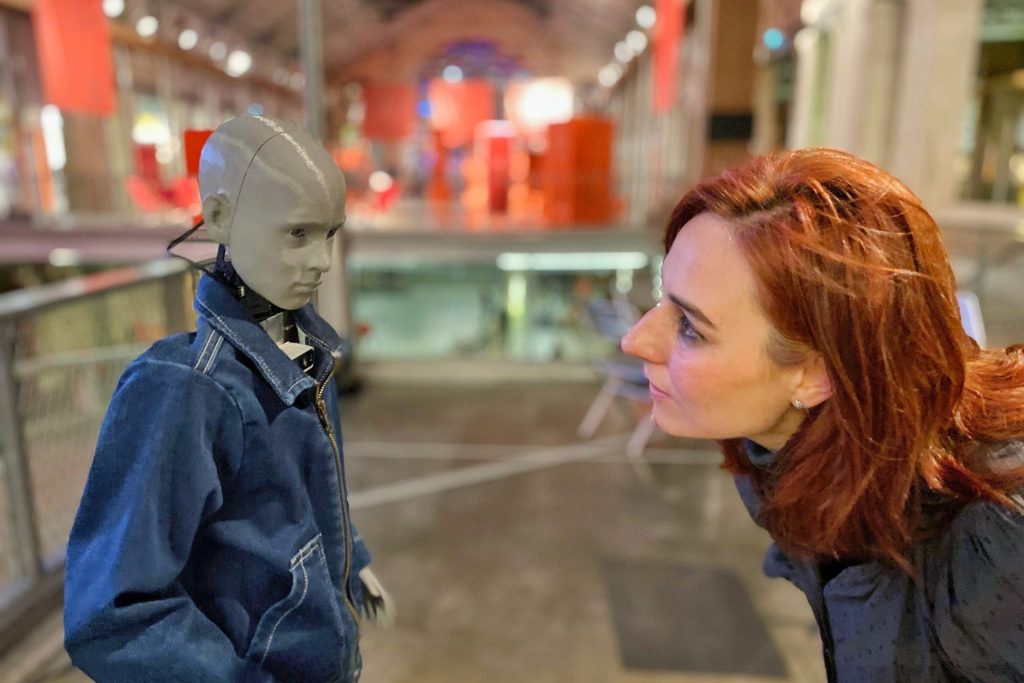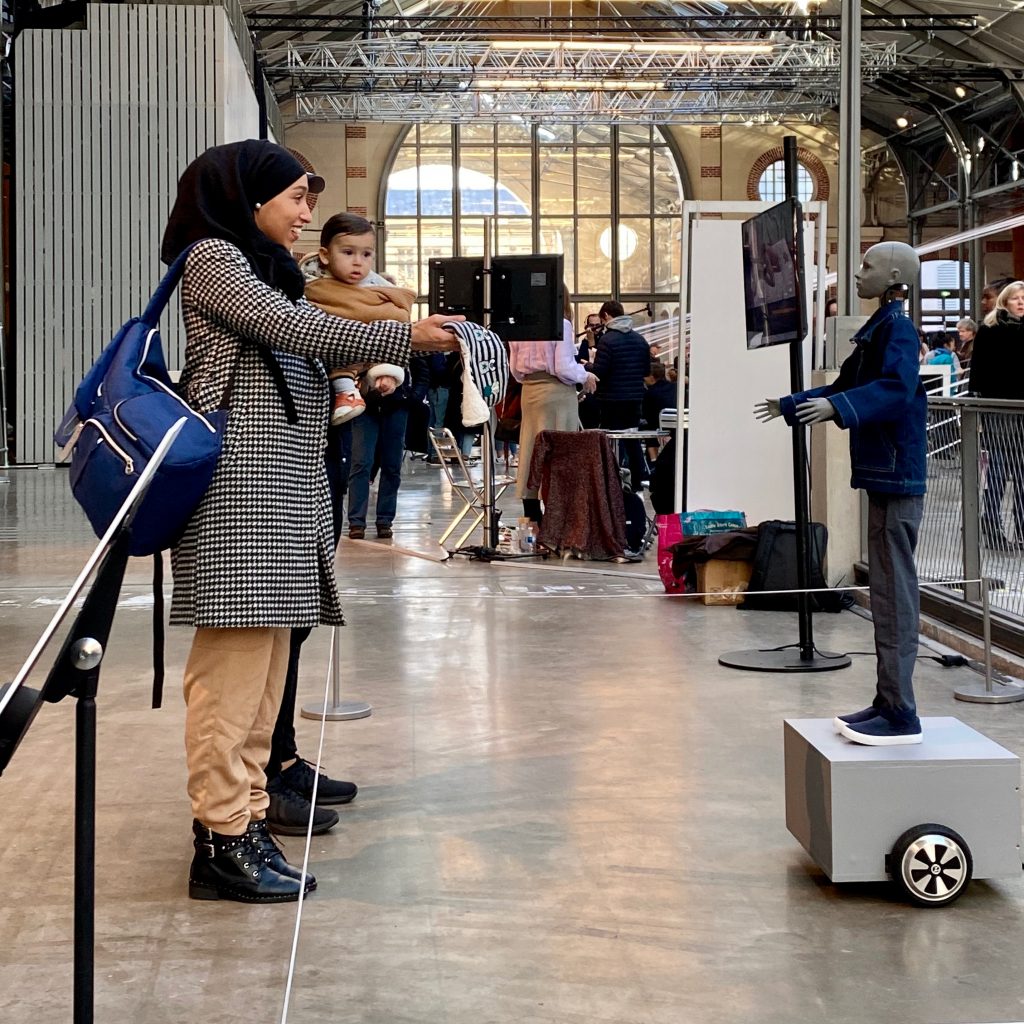To mark the successful completion of the Cyberspecies Proximity VERTIGO STARTS residency, Schindler interviewed Alex May and Anna Dumitriu about the project where they created a new interactive robot artwork:

Can you tell us a little bit about the work created during the residency?
The artwork we created through our residency with Schindler is called “Cyberspecies Proximity”. The project explores what it will mean to share our sidewalks, elevators and transport systems in close proximity with mobile intelligent robots. Our “Cyberspecies Proximity” robot combines the way-finding technologies used in delivery and maintenance robots with an ability to communicate non-verbally and manipulate our emotions through body-language, embodied in a delicate humanoid form.
The robot is able to move around, react and respond to the body language of audience members through a multi-layered face, skeleton, body and movement tracking algorithm connected to an Intel RealSense Depth Camera sensor. It approaches audience members and physically ‘communicates’ with them through movement, for instance by tilting its head, and responding to the poses with its own body language. The artwork was programmed in C++ and FUGIO, the Open Source Visual Programming System created by Alex May.
What social issues does the work evoke in relation to human-robot interaction?
The small and fragile humanoid form of the robot is dressed in the clothes; The robot’s head and hands are made from 3D printed grey PLA and it intentionally avoids categorizations of race and gender. There is extensive research into the relationship of robot appearance and social biases with the vast majority of robots being white. The roles of robots are often related to gender biases with personal assistant and care robots being predominantly ‘female’. In “Cyberspecies Proximity” we have sought to problematize this issue and kick start debates on the unrecognized biases in design and engineering practices.
What do you see as the main takeaways from the residency for Schindler?
Our robot doesn’t aim to be a design solution but takes the form of a thinking tool to engage wide audiences in the future of human-robot coexistence as we begin to live and work in close proximity to robots. The artwork aims to engage viewers on a deeply emotional level and draw in audiences from all backgrounds, ages and levels of expertise and creates a forum for discussion and debate.
In essence, the project asks us all to reflect on issues such as the ownership of public spaces as well as the broader ethical implications of how we design robots and behave towards them. The work aims to challenge audiences to confront the technological, ethical, and societal questions raised by the advent of urban socially aware robots.

What will happen next? Where would you like to exhibit the work once containment measures have been relaxed?
The containment measures have really affected our possibilities to exhibit the work in the near future, but we have had a lot of interest from curators already and are in discussion with several about future opportunities. We are confident that we will be able to tour the work widely moving forward. We were very lucky to be able to exhibit the robot in Paris at the STARTS Residency Days at CENTQUATRE at the end of February where lots of curators were able to see the work. We already have plans to showcase the work somehow (either online or perhaps later in the year) with Waag Society in Amsterdam but our biggest wish is to bring the work back to visit Schindler so our close collaborators and all the staff can meet and interact with the robot. Perhaps we will have the chance to offer some of those one-to-one confined and time-limited performances with the robot in one of the elevators!